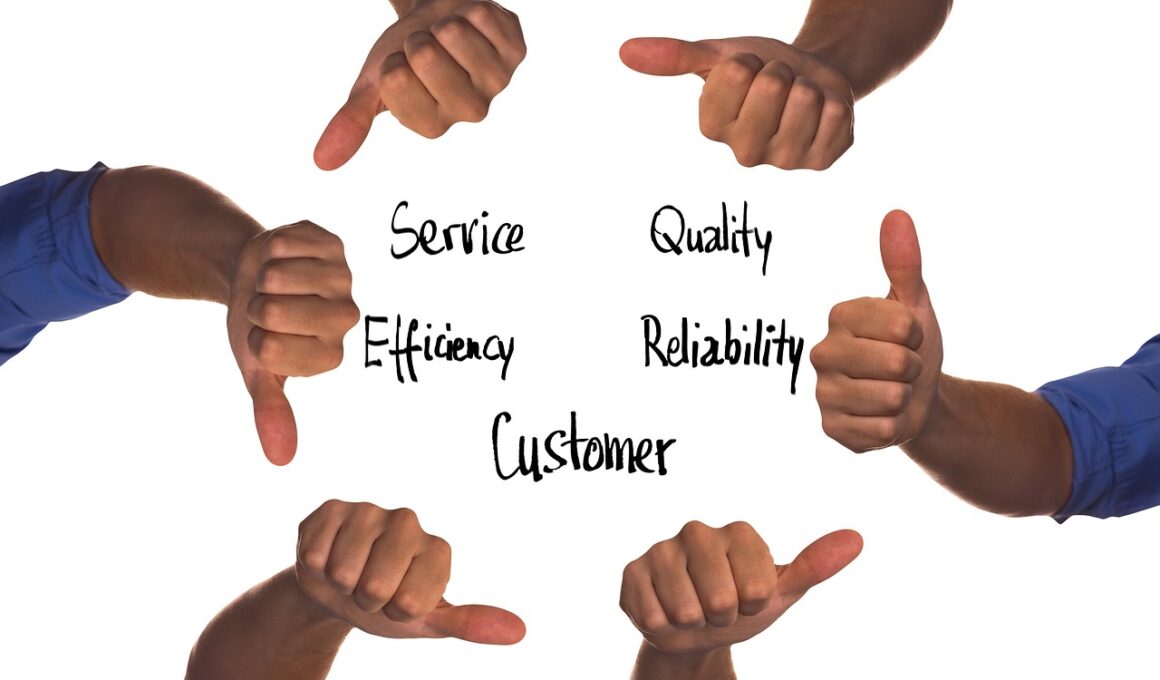How to Reduce Customer Attrition Using Marketing Analytics
Customer attrition, or churn, is a significant concern for businesses across all sectors. Understanding why customers leave can be complex; however, marketing analytics provides insights that can be invaluable. This involves analyzing customer data, such as purchasing behaviors and engagement patterns. Marketing analytics can help businesses uncover trends that indicate dissatisfaction before a customer decides to leave. Utilizing various metrics, such as customer lifetime value and retention rates, companies can gain clearer visualizations of these trends. Understanding these indicators allows businesses to better target retention strategies as well. To minimize churn, companies should also assess the communication channels that resonate best with their customers. Conducting surveys or feedback sessions can help in gathering data, allowing businesses to address specific pain points. An effective retention strategy often involves developing tailored marketing campaigns that engage existing customers. For example, offering personalized discounts or loyalty rewards can encourage continued patronage. The integration of feedback loops into marketing strategies ensures that businesses keep customers engaged, increasingly reducing the likelihood of attrition. Regularly revisiting analytics ensures continual improvement in customer retention efforts and helps build lasting relationships with the customer base.
One of the primary tools in marketing analytics is segmentation. This method allows marketers to categorize their customer base into distinct groups based on behavior or demographic factors. By segmenting customers, businesses can identify which segments are more prone to attrition. Each group may have different needs and expectations, so tailoring marketing efforts accordingly is crucial. For instance, understanding the reasons behind churn in a particular segment can lead to more focused retention strategies. By addressing the unique challenges faced by each group, companies can create relevant offers or communications that resonate better. Additionally, employing predictive analytics can also forecast potential churn before it happens. Businesses can analyze historical data and customer interactions to identify patterns that often precede a customer’s departure. Machine learning algorithms can assist in developing models that predict these behaviors with high accuracy. This proactive approach allows marketers to address potential issues before they escalate, making it an effective strategy for reducing churn rates. Businesses should prioritize implementing these analytics to stay ahead of customer expectations and promote loyalty over time. By combining segmentation and predictive analytics, companies can better understand and serve their customers.
Utilizing Customer Feedback Effectively
Feedback is essential for understanding customer satisfaction and improving retention strategies. Customer insights come from various sources, including reviews, surveys, and direct communications. It’s imperative that businesses proactively seek and analyze this feedback to identify improvement areas. Not only does feedback reveal pain points, but it also highlights successful strategies that can be leveraged further. By analyzing feedback through sentiment analysis tools, marketers can quantify positive and negative sentiments around specific products or services. Understanding customer emotions tied to their experiences enables companies to make informed decisions about necessary changes. Furthermore, establishing a transparent and approachable feedback loop increases trust, as customers feel their opinions are valued. Actively engaging with customers about their experiences fosters loyalty and illustrates that their feedback is implemented. After improvements are made, companies should communicate these changes to their customers, as awareness can enhance satisfaction levels significantly. Sharing success stories about new features or product adjustments can solidify relationships and encourage continued patronage. Overall, focusing on customer feedback and iterating based on insights can effectively build stronger customer relationships and reduce attrition over time.
Incorporating data-driven marketing campaigns is critical to enhancing customer retention. By utilizing analytics to tailor marketing strategies, businesses can create personalized experiences that resonate with their customers. Personalization in marketing involves delivering relevant content or offers based on individual customer preferences or past behaviors. For example, email marketing campaigns can be customized to target previous purchasers with replenishment reminders or upgrade offers. Utilizing recommendation engines also enhances personalization by suggesting products customers may be interested in based on their browsing history. The impact of tailored experiences on customer satisfaction cannot be overstated, as customers appreciate companies that understand their needs and preferences. Consistently engaging with customers through tailored communication reinforces their connection to the brand. Social media channels can be particularly effective for these personalized approaches, enabling direct interaction with customers in real-time. Businesses should also utilize A/B testing to refine these campaigns further, analyzing which strategies produce the highest engagement and conversion rates. Merging customer data with effective marketing techniques allows companies to foster a deeper sense of connection with their audience, ultimately driving loyalty and minimizing attrition.
Leveraging Technology for Customer Retention
Advancements in technology play a pivotal role in optimizing customer retention strategies. Tools such as Customer Relationship Management (CRM) systems centralize customer data, allowing businesses to track interactions and analyze behaviors more effectively. By leveraging CRM research, companies can better understand customer needs, preferences, and tendencies, leading to improved service adjustments. Automation tools can streamline customer communication, ensuring that relevant information is delivered promptly, engaging customers at pivotal points in their journey. Automated reminders for appointments or service renewals can assist in maintaining communication without overwhelming the customer. Additionally, using analytics can help identify potential churn signals such as declining engagement or recent purchase behavior. Brands can intervene promptly with targeted offers or personalized outreach in these instances, demonstrating their commitment to retaining valued customers. Furthermore, businesses should continually assess the effectiveness of the technologies utilized in their retention strategies. Monitoring performance metrics can lead to insights about which tools yield the best results. Embracing innovative technologies allows businesses not only to enhance customer experiences but also to create durable relationships that help to mitigate attrition substantially.
Another essential component of reducing customer attrition is enhancing customer service quality. Exceptional customer service can significantly impact customer satisfaction and loyalty. Investing in training employee programs and utilizing analytics to track performance can improve service levels. Understanding common customer complaints and analyzing response times through data can reveal areas needing attention. Employing a multi-channel support system ensures customers can receive assistance through their preferred channels, whether it be social media, live chat, or phone. Ensuring prompt and efficient resolutions to customer issues can greatly increase overall satisfaction. Additionally, implementing proactive service measures, such as regular check-ins or follow-ups, can demonstrate that the business values its relationship with the customer. Customers are more likely to feel appreciated and continue purchasing if they feel that their concerns are taken seriously. Regularly revisiting and refreshing customer service strategies can help in developing a culture of continuous improvement. By prioritizing quality service and responsive communication, businesses can effectively reduce attrition rates and nurture long-term customer relationships that thrive over time.
Conclusion: The Future of Customer Retention
The future of customer retention lies in understanding the evolving needs and preferences of customers. Marketing analytics provides the key to unlocking valuable insights into customer behavior, equipping businesses with the tools necessary to respond to changes proactively. As technology continues to advance at a rapid pace, the potential for data analysis will only grow more powerful. Companies that prioritize leveraging analytics for decision-making will find themselves at a significant advantage in the marketplace. It is essential for businesses to stay updated on market trends, continually assessing the shifting dynamics of consumer behavior. Focusing on personalized experiences, effective communication, and quality services will be vital for retaining customers over the long term. Additionally, organizations should not underestimate the importance of fostering a customer-centric culture throughout all levels of their operations. Integrating customer feedback into strategy development should be a continuous practice to ensure ongoing relevance. By embedding a solid foundation of marketing analytics into retention strategies, businesses can navigate challenges effectively, leading to sustained growth and customer loyalty for years to come. The proactive adaptation of these strategies will be crucial in minimizing customer attrition effectively.
The impact of marketing analytics on customer retention is profound and undeniable. It offers the insights and strategies businesses need to engage with customers meaningfully, fostering lasting loyalty in an increasingly competitive market.


